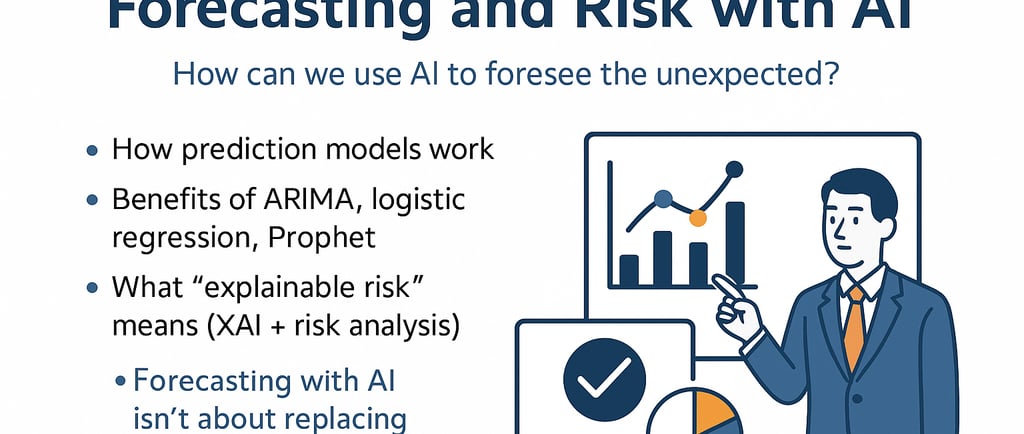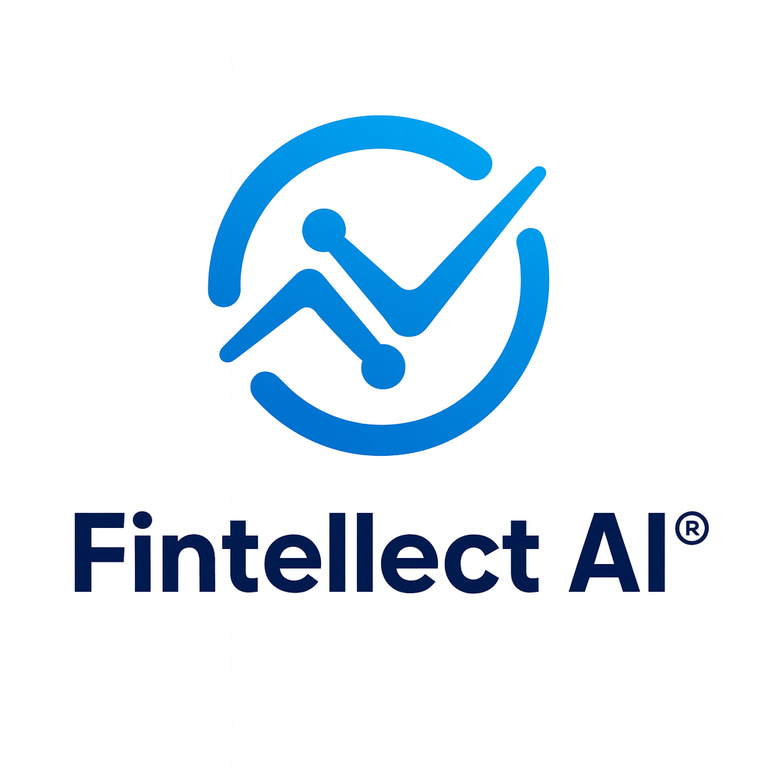AI in Finance: From Awareness to Mastery- From Data to Decisions – Forecasting with AI
Why Real-World Forecasting Requires More Than Just Numbers
CFO INSIGHTS
Zhivka Nedyalkova
5/15/20253 min read


Why Forecasting Needs a Rethink
For years, financial forecasting has relied on spreadsheets, linear trends, and the best guesses of experienced professionals. But in an increasingly volatile world — one where uncertainty is the new normal — that’s no longer enough.
Artificial Intelligence offers something more: the ability to not just project what might happen, but to simulate, adapt, and respond. Yet as many finance teams are discovering, using AI for forecasting and risk management requires more than just plugging in a model — it takes clarity, context, and collaboration.
Let’s break it down.
1. What Forecasting with AI Actually Means
AI forecasting goes beyond projecting a line on a graph. It means using machine learning models that:
Learn from large volumes of past data
Detect hidden, nonlinear patterns
Adjust automatically when new data comes in
Unlike traditional systems, AI doesn’t assume the future looks like the past. It adapts to shifts in real time — from customer churn to market shocks.
But the real power lies not in the algorithm itself — it’s in how finance professionals use it.
2. The Models Behind the Magic: ARIMA, Logistic Regression, Prophet
You don’t need to become a data scientist, but it helps to know what’s under the hood:
ARIMA (AutoRegressive Integrated Moving Average) is excellent for forecasting time-based values like revenue or cash flow. It learns from trends and seasonality — and updates projections when data changes.
Logistic Regression doesn’t forecast numbers, but probabilities — e.g., how likely it is that a client will default on a payment.
Prophet (developed by Meta) is designed for businesses — it’s fast to train, handles seasonality well, and is transparent in how it makes predictions.
Each model fits a different use case. ARIMA for cash planning. Logistic regression for risk. Prophet for forecasting revenue volatility.
3. From Prediction to Action: What Makes It Smart?
A prediction is only useful if it leads to action.
That’s where Human-in-the-Loop (HITL) and Explainable AI (XAI) come in:
HITL means finance professionals remain in control — reviewing suggestions, adding context, and making the final call.
XAI helps teams understand why the model gave a certain output, not just what it predicted.
You shouldn’t trust a forecast unless you understand how it was made — and how to challenge it.
4. Common Pitfalls of Forecasting Without AI
Too many teams still rely on outdated habits that limit their foresight:
Assuming Linearity
Many financial models expect stable growth or decline. But reality isn’t linear. Logistic regression and time-series models like ARIMA handle irregularities better — especially when things shift unexpectedly.Ignoring Macroeconomic Context
Classic forecasts rarely consider inflation, interest rates, or news sentiment. Modern AI models (when trained with external data) can.Overfitting to the Past
Static models are good at explaining yesterday — not anticipating tomorrow.
The more your forecasting process assumes “business as usual,” the more likely it is to miss what matters most.
5. Real-World Examples of Forecasting + Risk AI
Let’s move from theory to practice. Here’s how AI models upgrade traditional approaches:
Cash Flow Shortage
Old way: Monthly spreadsheet review
AI way: ARIMA detects early dips; options modeled and visualizedClient Payment Risk
Old way: Manual credit scoring
AI way: Logistic regression flags probability of defaultRevenue Volatility
Old way: Assumptions from past quarters
AI way: Prophet forecasts impact of upcoming promotions or shiftsProject Budget Overruns
Old way: Human estimates
AI way: ML predicts budget risk based on delays and task risk profilesMarket Entry Risk
Old way: Consultant-driven SWOT analysis
AI way: AI simulates expansion scenarios with probability distributions
6. Don’t Forget the “Human” in the Forecasting Loop
Yes, AI is powerful — but only when paired with human judgment.
Forecasts should trigger conversations, not silence them. The best results come from teams who:
Use AI to flag risks early
Validate outputs with context and experience
Ask critical questions before acting
The goal isn’t to replace decision-making. It’s to make it smarter, faster, and better informed.
7. Getting Started — Keep It Simple, Start Where It Matters
You don’t need a full tech team or advanced degrees to begin using AI in forecasting. What matters most is clarity of purpose and a willingness to explore smarter tools.
🔹 Start with one high-impact area — like revenue forecasting or cash flow planning
🔹 Use the historical data you already have
🔹 Choose a tool that fits your team’s capacity — even no-code solutions can be powerful
🔹 Most importantly, keep people involved in reviewing and refining AI outputs
Forecasting with AI isn’t about replacing expertise — it’s about enhancing it with better signals, sooner.
Forecasting Is No Longer Optional
Uncertainty isn’t going away. Whether it’s global events, economic shocks, or internal complexity — finance teams must be ready for what’s next.
AI doesn’t eliminate uncertainty, but it helps us navigate it. When forecasting is continuous, contextual, and explainable — risk becomes a signal, not a surprise.
And that’s how finance moves from reactive to resilient.
